Download biography (pdf) here.
Helge Tallqvist: The BLUES JUNCTION Interview
David Mac (DM): Greetings Helge...Let’s start by telling our readers what part of the planet you call home.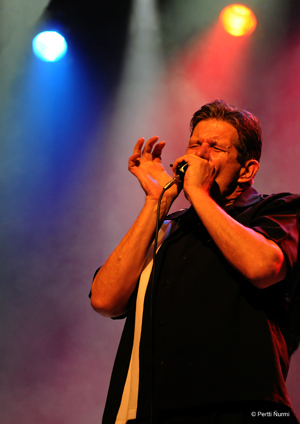
Hegle Tallqvist (HT): I’m from Helsinki, Finland. I now live about 25 kilometers outside the city in the countryside. I own a small house near a lake. It is a great place to raise kids and to play blues music. I have two adult children from my previous marriage and now two sons, five and seven.
DM: That is a wonderful age. Speaking of family do you come from a musical family?
HT: No, music was not important for my parents, but my older brother loved music. I first heard music through him. He listened to a lot of 50’s era rock & roll?
DM: Under what circumstances did you first hear blues music?
HT: My first blues concert was John Mayall’s Bluesbreakers in Helsinki and their album
Crusade was my first “blues” record. There were so many bands: Cream, Fleetwood Mac, Blind Faith, Jimi Hendrix, Savoy Brown, The Allman Brothers Band. The list is long. This music suited us as kids, as it did a lot of young people. We protested against everything in the society. We just wanted to be different from our parents. These bands had the long hair and that was different, so that appealed to us.
DM: You grew up and now you are a parent. You definitely matured in your taste in music as well.
HT: That’s right. We found the originals. This music was something new we did not know about before. Still many of my generation stayed with this kind of blues from Europe. Even today, I think most blues bands in Europe prefer this kind of rock-blues.
DM: That’s because it is easier to play and they don’t know any better. Did you have any formal musical training or a mentor growing up?
HT: I have no musical training, but I met the great Pepe Ahlqvist. We became friends and he took me into the world of blues harmonica.

DM: Helge, who are your musical influences as it relates to the harmonica?
HT: I don’t think there is any blues harmonica player who isn’t influenced by Little Walter Jacobs, especially if you want to play that 50’s/60’s style with tongue blocking single notes. Sure all the greats have influenced me, but for me it is Little Walter and George “Harmonica” Smith. I had listened a lot to Little Walter and had a dream to be able to play at least some of Walter's licks someday. I never thought I would play the instrument professionally.
DM: At some point that thought came to you. Do you remember when that was?
HT: I do! That decision was made in 1982 when I, along with Pepe and some friends, spent three weeks in Los Angeles and San Francisco with George Smith and Bill (William) Clarke. I also got a chance to meet Rod Piazza, Shaky Jake and Rick Estrin. Plus we met a lot of the great guitar players in the area. Wow, that trip was crucial for me.
We then introduced these greats to a promoter here in Scandinavia. Bill and Rod toured a lot more in Scandinavia after that. Those two guys always encouraged me to keep on practicing. I remember what Rod said to me in Helsinki when I talked about my day job and how hard it is for a family man to improve. I remember his words forever. “Hey man, you have to keep on playing. There are so few in the world doing this in the right way”. I was a beginner at that time, but it was nice of Rod to say that. His comments gave me strength. I became close friends with Bill too and he always gave me positive feedback and helped me a lot until he sadly passed away in 1996. I lost a close friend who will always stay in my mind.
Bill arranged for me to get my hands on my first Bassman amp. He looked for a good one in L.A. and sent it to me. What a friend. It was the first ’59 Fender Bassman in Finland. I think it may be the first in all of Scandinavia. So getting back to your question about mentors, they came later, but they are the best mentors anyone could have. They are the premium class.
DM: Let’s back up a minute and talk about your trip to L.A. Not everybody who hears blues music travels half way around the world. Let’s talk about this experience, this pilgrimage and how it came about.
HT: When I met Pepe Ahlqvist in 1978, I had not heard about George Smith. It was kind of strange because I had listened to a lot to harmonica blues even though I was playing guitar at that time. I listened a lot to Little Walter as I mentioned, as well as Big Walter Horton, Junior Wells and Sonny Boy Williamson 2. It was Pepe who introduced me into the world of chromatic harmonica. He also introduced me to Rod Piazza who told me about George “Harmonica” Smith. After that meeting I bought all George Smith’s albums as well as Rod Piazza’s records.
In 1982, I went with Pepe to Stockholm, Sweden, where George had two gigs, one in a club and one in a concert hall with Buddy Guy. We told George that we had a plan to go to Chicago to listen to the blues. George asked us, “Why Chicago?” He went on to say, “All the best harmonica players live in Los Angeles. So, forget Chicago.” He invited us to Los Angeles and told us he would take us around the area to the blues clubs.
DM: That must have been wild and a lot of fun, as well as an eye and ear opening experience for you.
HT: Yes it was. One special happening I would like to tell you about Dave. When we arrived to L.A. we were in a hurry to drop off our bags in a motel and head straight away to Redondo Beach and the Starboard Attitude club. Bill Clarke was playing there. We had bought two Finlandia Vodka bottles to George and Bill as a gift and brought them to the club to present this gift to them.
DM: Oh no!
HT: Oh yes! The owner did not like that.
DM: No kidding...
HT: He said to Bill “What kind of friends do you have that are taking their own alcohol into my club?” Bill said, “They are our guests all the way from Finland and these bottles are presents to me and George.” Bill gave the bottles to the owner and said that he can keep them until we leave.
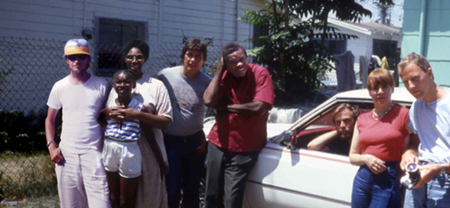
The owner kept talking about the bottles and for some reason later in the night we sawchairs in the air. The owner threw chairs against Bill. George said, “All Finns out of the club NOW!” The guitar player and bass player just took their chords out of the amp and ran outside the club with their guitars hanging around their necks. The club was empty in a minute.
George told us that this is the reason why he doesn’t really like to go out and play much anymore...fighting everywhere.
That one incident shows you the selflessness of George Smith. His very first thought was to protect his guests from Finland. There are so many stories about those three weeks in L.A. I should write a book that not only talks about the great skill of those blues players, but also about the great humanity and caring in these people.
DM: What did Bill have to say about the Vodka bottle/chair throwing incident?
HT: He told us the next day. “THANKS A LOT FOR THE VODKA! So, no gigs anymore at Starboard Attitude.” He had a big smile on his face.
DM: I really like your 2005 album “... Plays George “Harmonica” Smith.”
HT: I am so glad to hear that. Some time had passed since those three weeks in California. I knew I had a lot of work to do before I would be ready to do a tribute album for George.
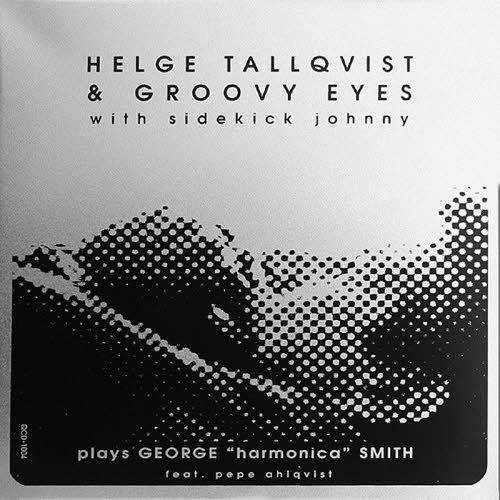
I contacted the great Jo’ Buddy and told him about my plan. He had a great band, Groovy Eyes, and with my long time guitar player, Sidekick Johnny we made the record. I am so happy I made this CD. I really hope this music helps to encourage people to find the originals of George Smith.
DM: Let’s talk about the Finish blues scene.
HT: For some reason blues is very popular in Finland and we have several real good bands here. Pepe Ahlqvist is still a big star here. Unfortunately he does not play harmonica anymore.
DM: Why not?
HT: He changed to guitar and makes a lot of solo and duo gigs. He doesn’t do much with a full band anymore. Perhaps the most famous artist internationally is Erja Lyytinen with her band.
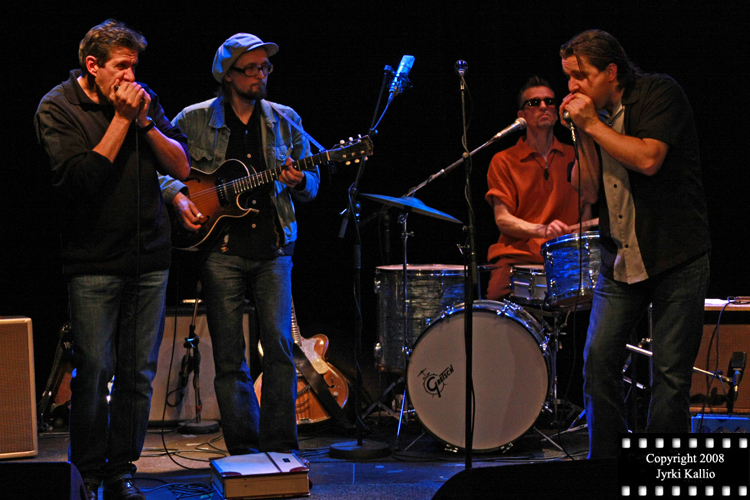
They have a lot of gigs all around Europe. Then, of course, we have guitar player Tomi Leino and his Trio they are absolutely the greatest blues band in Finland. They play the “the American way” and that is why such greats as Steve Guyger, James Harman and many more stars from the States want to play with this band when they are in Scandinavia. James Harman said, “There is no need to take your own band with you anymore when you come to Europe/Scandinavia because you have the Tomi Leino Trio” Tomi also plays with the great Swedish band Trick Bag. There are a lot of other good bands here.
DM: Do you care to mention any others?
HT: Sure...there is Honey Bee & T-Bones with Aija Puurtinen and Esa Kuloniemi, Micke Björklöv, Wentus Blues Band who always have some great name with them on tour and of course there is Jo’ “Buddy” Raulamo and The Groovy Eyes. Jo’ Buddy also plays with just a drummer sometimes they are called Down Home King and are fantastic.
DM: How about the Swedish scene? Are you familiar with what is happening down there?
HT: They have some great artists and bands as you probably know. There is Trickbag, who I mentioned and of course Sven Zetterberg. He is a great singer, guitar player and harmonica player. There is also one young lady who has become very famous in Sweden in a short time, Lisa Lystam. Like Ina Forsman, the singer in my band, she is very young and quite talented. These woman will bring the blues to a whole new audience. I am also aware of the fact that there are other bands in Sweden with whom I am not yet familiar.
DM: Let’s talk about the young, super talented Ina Forsman.
HT: I saw Ina when she was seventeen. She appeared on the Finnish Idols competitions final. 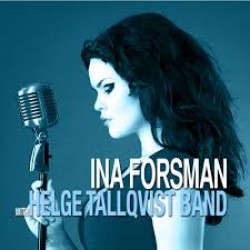 She performed Etta James’ song All I Could Do Was Cry in a way that I thought I was dreaming. I got the idea to have a female singer in my band and contacted Ina.
She performed Etta James’ song All I Could Do Was Cry in a way that I thought I was dreaming. I got the idea to have a female singer in my band and contacted Ina.
The first thing we did was to go into a studio where she sang two Slim Harpo songs. Those songs are on our first CD. This is how Ina got interested in blues. Then everything happened very fast. Everybody was interested in this teenager and her voice.
We made our first CD. We represented Finland in the spring 2014 European Blues Challenge. Eighteen countries participated and we came in fourth place. We have toured a lot on blues festivals in Finland last summer. We also traveled all over Europe and will continue in the winter of 2015. At the moment we are preparing our second CD with our own originals. We have also played on the National TV in Finland.
DM: This must be very exciting for her and beyond all of that, she is very lucky to work with someone like you with the maturity and experience you bring to the table.
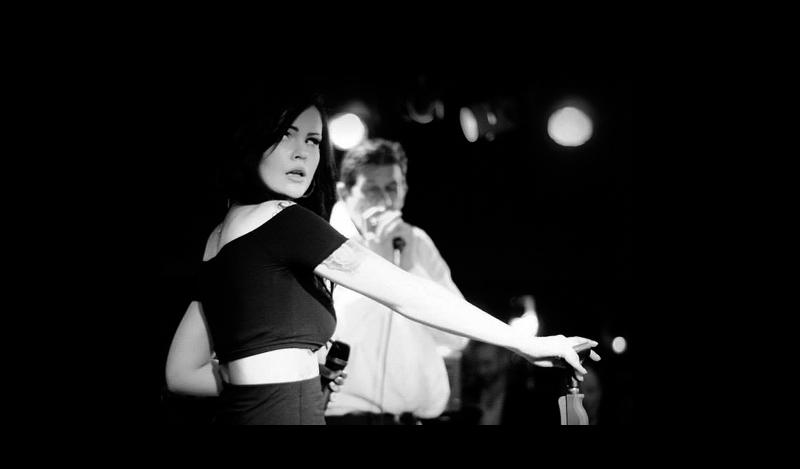
HT: So very much has happened in a very short time. A lot will happen in 2015. People are surprised how such a young woman chose the blues and how she is able to sing this music so well. I’m sure that Ina will become a big star. She is already making her own songs, which is needed to break through internationally.
DM: What are your interests or hobbies outside of music?
HT: I played a lot of soccer in my younger days. I have a university degree in economics and have worked all my life in the advertising business as a client director. This means that I have never been economically dependent on my music. This has allowed me to concentrate on the music I love most and not on what I think other people might buy. This has been very satisfying. So to answer your question Dave, I have been a sportsman, family man, businessman and bluesman. This has, of course, been by design and by choice.
DM: Now that all has changed to some degree.
HT: That’s right. Now, when we have so much going on with Ina for the first time in my life I am a full time musician. It sounds so much better to say when people ask, ‘What do you do for a living Helge?’ Now I can say 'I am a blues man.' It sounds much better than ‘client director.’ What do you think?
DM: I agree. What would you like people to know about you?
HT: That I have a philosophy.
DM: What is that?
HT: It is belief, a way of thinking...
DM: (laughing) I know what philosophy means...
HT: (laughing) I know. I like to have fun with you Dave. My philosophy is that it is very easy to reach a goal you have set if you really want to reach it. I think most people do not quite know what they want and I think that’s why their dreams have not come true. I don’t think I’m the most talented guy in blues music, but I had a dream that one day I will play blues music to an audience and perhaps even play on a record. So everything is possible. For someone who is very talented it is just a bit easier, but by working hard and loving what you do, one can come up to the same level as a talented one. So there aren’t any excuses to not live your dream. That is how I feel.
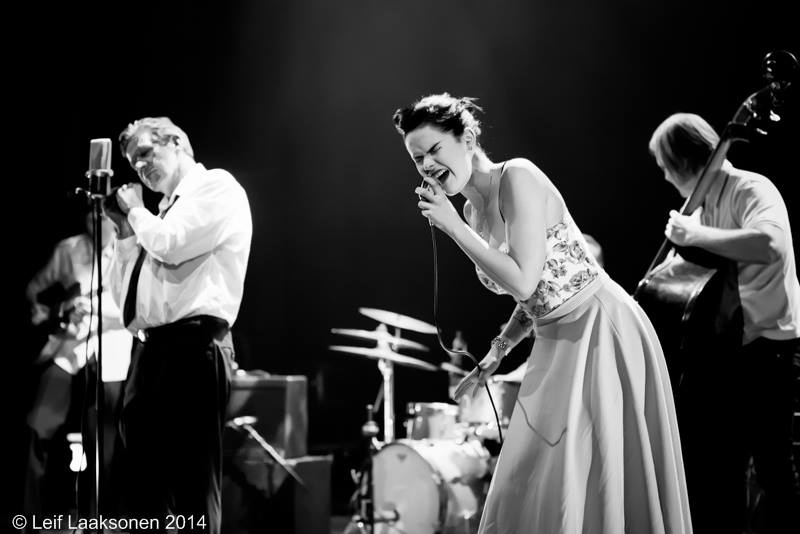
DM: What should have I asked you that I didn’t?
HT: ‘When will you come to California Helge with Ina and your band?’ Thanks for asking Dave. We will come when you or someone you know books us. ‘Where in the U.S. would you like to play most?’ Southern California, Dave, where my interest in playing the blues harmonica started in 1982. We would love to play at the Doheny Blues Festival near you Dave. I’m sure people would love Ina Forsman and our band. And we are playing 100 % “The American Way”.
DM: (laughing) Thanks for your time Helge and for the great music.
HT: I am honored to be asked to do this interview with you Dave and to be in BLUES JUNCTION. Thank you so much Dave.
DM: You are very welcome Helge. It has been a blast.

